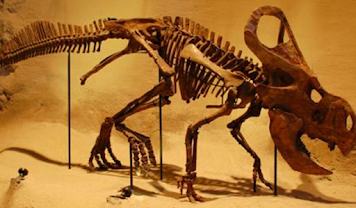Paleontology
paleontology background
Paleontological research dates back to the early 1800s. In 1815 the English geologist William Smith demonstrated
the value of using fossils for the study of strata. About the same time, the
French zoologist Georges Cuvier initiated comparative studies of the structure
of living animals with fossil remains.
Meaning
Paleontology is drived feom Greek word “
palaios” mean old 1 on, existing 1 logos, means to study), which is the study
of the fossil record, provides some of the most direct evidence for evolution.
Defination
“Paleontology
is the study of ancient life, from dinosaurs to prehistoric plants,
mammals, fish, insects, fungi, and even microbes”.
Fossil
Word Fossils is
derived from the Latin word “ fossilis”is mean
to dig are evidence of plants and animals that existed in the past and
have become incorporated into the earth’s crust (e.g., as rock or mineral). Fossils
are formed in sedimentary rock by a variety of methods.
Defination of Fossil
A fossil is the hard remains of a prehistoric
animal or plant that are found inside a rock
There are five types of fossils:
·
Body
Fossils.
·
Molecular
Fossils.
·
Trace
Fossils.
·
Carbon
Fossils.
·
Pseudofossils.
Fossilization
Most commonly, fossilization occurs when sediments (e.g., silt, sand, or volcanic ash) quickly cover an organism to prevent scavenging and in a way that seals out oxygen and slows decomposition. As sediments continue to be piled on top of the dead organism, pressures build. Water infiltrates the remains and inorganic compounds and ions replace organic components. Hard parts of the organism are most likely to be fossilized, but delicate structures are sometimes fossilized when silica is involved with replacement. These pressure and chemical changes transform the organism into a stony replica. Other fossilization processes form molds, casts of organisms, or carbon skeletons. Tracks and burrows, and even mummified remains, are sometimes found.
Fossilization is most likely to occur in aquatic or semiaquatic environments. The fossil record is therefore more complete for those groups of organisms living in or around water and for organisms with hard parts. The fossil record provides information regarding sequences in the appearance and disappearance of organisms. Different strata of rock result from differing rates of sedimentation. Climatic and geological events influence rates of sedimentation. When rates of sedimentation change, a break in deposition occurs, leaving a distinct layer or stratum. Successive strata are piled on top of each other, with younger strata on top of older strata. Fossils in younger strata are of animals that lived more recently than fossils in older strata. Geologists can correlate strata around the world and determine when strata were formed using radioactive dating. Paleontologists use this information to provide an understanding of many evolutionary lineages. Many vertebrate lineages are very well documented in the fossil record. For example, the fossil record allows the history of horses to be traced back about 55 million years. Most of the evolutionary events occurred in what is now North America.
Hyracotherium was a dog-sized animal (0.2 m in height at the shoulder). Fossils reveal the presence of four prominent toes on each foot and a tooth structure indicative of a browsing lifestyle. As the habitat became more grassland-like, natural selection favored animals with longer legs used for outrunning predators and larger more durable teeth (molars) used for grazing. A loss of some foot bones, and a reduction in others, was accompanied by an elongation of the middle digit. The shift from browsing to grazing was also accompanied by an elongation of the face. Paleontologists have also used the fossil record to describe the history of life on earth (see inside back cover). Evidence from paleontology is clearly some of the most convincing evidence of macroevolution.




Post a Comment